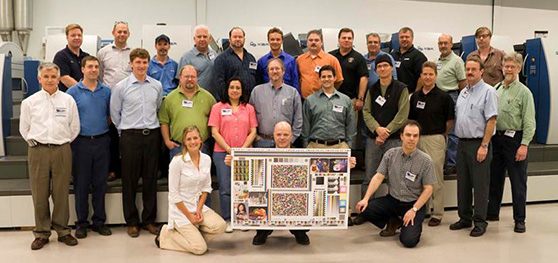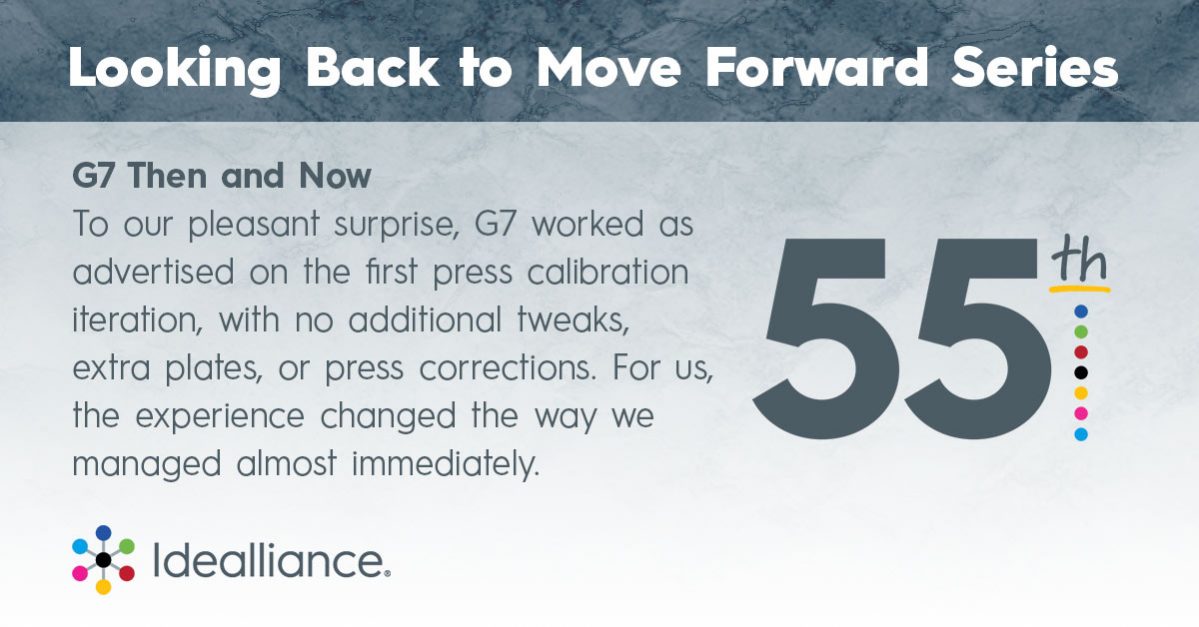Jeff Collins worked in commercial print manufacturing with his experience spanning the gamut of printed products in packaging, labels, publications, e-commerce, and premedia/service bureaus until he joined the Idealliance team in 2018. While at Koenig & Bauer as Sales and Marketing Support from 2002-2008, he became introduced to G7®. Here is his story.
Before 2006, many people like myself were frustrated by the time and effort required to match and maintain a repeatable color expectation. Our customers were frustrated, too: publishers, print buyers, designers, suppliers, print manufacturers, and brands. Unaware of near-neutral calibration or G7, we applied dot gain (TVI) curves to plates for color calibration. We were also transitioning from laminated halftone proofs to ICC managed inkjet solutions to add further complication. Inconvenient overtime and waste were the reality.
In late 2006, a fellow named Gerry Gerlach passionately advised us of this new “G7” gray balance calibration method developed by a well-known color consultant Don Hutcheson. We were skeptical. Achieving gray balance and maintaining standard TVI tolerances was a challenge but achievable under very narrow conditions. Going outside of those limited conditions using innovative inks, FM screening, or unique substrates, press-to-press and press-to-proof alignment became very complicated. Gerry’s claim that the G7 calibration method was agnostic to different material and technology innovations seemed unrealistic.
After a little background research, we were even more suspicious of G7. We heard comments from gurus at the time like, “the emperor has no clothes,” “smoke and mirrors,” and even more negative statements from across the pond.
Hint: They were wrong. Unlike Gerry Gerlach and a handful of others, the dissenting voices never really tested the G7 process.
In early 2007, we decided to host Idealliance and Don Hutcheson to demonstrate the process on an offset sheetfed Koenig & Bauer Rapida 106, a waterless DI sheetfed (74 Karat), a Kodak Spectrum Proofer, and an Epson Inkjet proofer in exchange for accommodating one of the first G7 Expert Certification courses. Don assured us G7 would work on all of those devices.

To our pleasant surprise, G7 worked as advertised on the first press calibration iteration, with no additional tweaks, extra plates, or press corrections. Inkjet and analog proofs were an acceptable match to the press run. For us, the experience changed the way we managed almost immediately. We subsequently tested G7 calibration on various waterless inks, aqueous and UV inks, AM and FM screening, plastics, board, uncoated, and coated stocks. Press-to-press color alignment became fast and achievable.
Today, Idealliance’s G7 and its characterized reference print conditions are the world’s leading color quality requirements, adopted by the largest brands, CPG’s, and print suppliers globally. G7’s near-neutral calibration method is now soon to be part of ISO 12647-2 and the basis for ISO/PAS 15339 Characterized Reference Print Conditions. G7 continues to evolve into digital textile printing, extended color gamut solutions, better certification and training programs, software and hardware, OEM service and support programs, and brand identity requirements—indeed proving it’s enormous value to the supply chain.
Read the rest of the November 2020 Digest from Idealliance »


